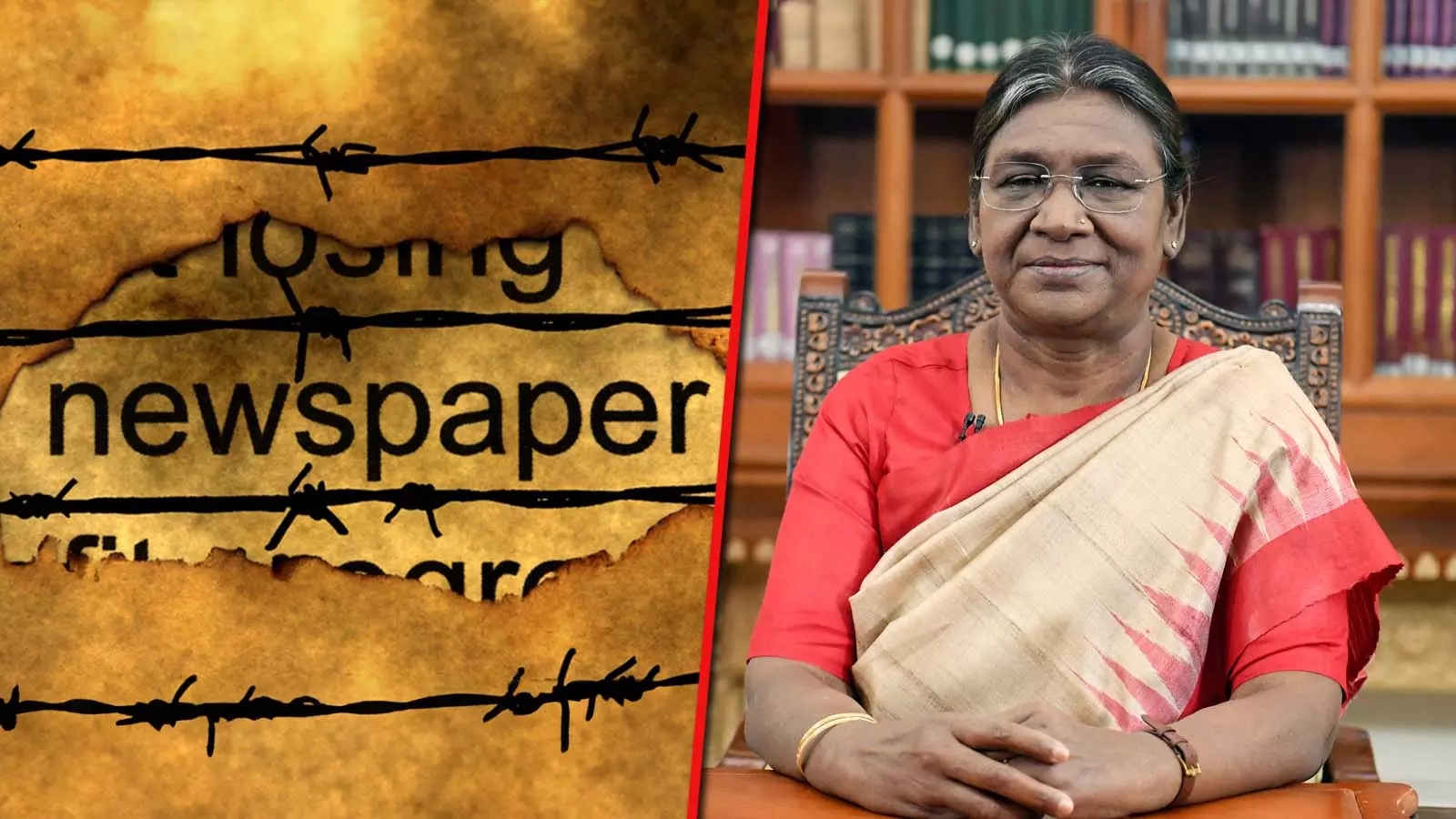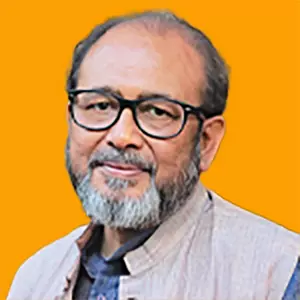
- Home
- India
- World
- Premium
- THE FEDERAL SPECIAL
- Analysis
- States
- Perspective
- Videos
- Sports
- Education
- Entertainment
- Elections
- Features
- Health
- Business
- Series
- In memoriam: Sheikh Mujibur Rahman
- Bishnoi's Men
- NEET TANGLE
- Economy Series
- Earth Day
- Kashmir’s Frozen Turbulence
- India@75
- The legend of Ramjanmabhoomi
- Liberalisation@30
- How to tame a dragon
- Celebrating biodiversity
- Farm Matters
- 50 days of solitude
- Bringing Migrants Home
- Budget 2020
- Jharkhand Votes
- The Federal Investigates
- The Federal Impact
- Vanishing Sand
- Gandhi @ 150
- Andhra Today
- Field report
- Operation Gulmarg
- Pandemic @1 Mn in India
- The Federal Year-End
- The Zero Year
- Science
- Brand studio
- Newsletter
- Elections 2024
- Events
- Home
- IndiaIndia
- World
- Analysis
- StatesStates
- PerspectivePerspective
- VideosVideos
- Sports
- Education
- Entertainment
- ElectionsElections
- Features
- Health
- BusinessBusiness
- Premium
- Loading...
Premium - Events

The Modi govt views the average journalist who appears to be fearless not just as a non-conformist, but also as an anti-national activist who violates the laws
In recent days, in a series of functions, journalists committed to fairness, fearlessness, and truthfulness in specific sectors were bestowed awards with several eminent individuals delivering important speeches even as citations were read out and honours presented.
Of these, precedence must be given to President Droupadi Murmu – because of the office she holds and not because of the awards’ importance (they are equally respectful) – who distributed the Ramnath Goenka Awards for Excellence in Journalism. She made significant observations regarding a free and fair Fourth Estate’s critical role in sustaining democracy.
Former Chief Justice of India DY Chandrachud, who spoke at the Business Standard-Seema Nazareth Award for Excellence in Journalism, also spoke on a similar theme – ‘Journalism as the mainstay of democracy’.
The major takeaway from his observations was blunt: “Without journalists, society and their members are relegated to an inferior state of awareness and intellect.” I might add, committed journalists essentially steer society away from fake news and all forms of obscurantist ideas paraded as news and information.
Also read: Journalism in the age of AI, social media, deepfakes, and rush to publish
Bold disconcerting take
In a slightly different format, the function hosted by The Media Foundation, for bestowing the Chameli Devi Jain, the Vishwanath-Delhi Press and Kamala Mankekar awards, was preceded by the BG Verghese Memorial, started in honour of one of the doyens of journalism, and was delivered by Justice (Retd) S Muralidhar.
Just to refresh the memory of readers, in August 2023, when he demitted the office of Chief Justice of Orissa High Court, Justice Muralidhar was not so insignificantly referred as the “boldest judge the Supreme Court never had.”
Unlike the other two who chiefly stuck to platitudes about the media industry’s importance in ensuring the vibrancy of democracy, Justice Muralidhar focused on several disconcerting facts, beginning with India’s plummeting standing in the World Press Freedom Index.
Also Read: Fear of surveillance is assault on press: Madras HC
Index pooh-poohed
The former judge recalled that instead of showing concern, the government, through the office of Union Information and Broadcasting Minister Ashwini Vaishnaw, argued that Indian had a robust press and this was evident in the steady rise in the number of registered periodicals and private TV channels over the past years, especially post 2014.
Quite clearly, the minister voiced the regime’s defence and equated rising numbers with the sign of increased fearlessness and fairness, and not to the growth of the fawning industry. Furthermore, the index was pooh-poohed by the minister when he claimed that the findings were based on ‘questionable’ methodology and inaccurate data.
The former chief justice of two high courts also made critical comments directed at the judiciary for its responses in cases related to press freedom. He rued frequent takedown and gag orders by the state and courts.
Also read: Who controls the news we consume? Does legacy media matter any more?
Alarming trend
Justice Muralidhar also highlighted an alarming trend – fact checkers being accused of spreading fake news, despite being professionally engaged in exactly the opposite.
He further drew attention to the harsh reality that any form of investigative journalism has been threatened with civil and criminal defamation proceedings initiated by powerful corporates and politicians.
President Murmu in her address promised to “offer some observations about some crucial issues, hoping that these remarks will lead to further discussion.” These included “news gathering, which is the soul of journalism”.
Issue of resources
The President is certainly on track in asserting that more resources are required to encourage the “culture of reporting from the ground.”
But, allocating more funds for such ventures in the hinterland and even outside India is completely dependent on the financial success and/or viability of different organisations in a market that is becoming more and more crowded day by day.
However, it would not be wrong to expect that if the state — in this context symbolised by the President — is aware of this handicap faced by the media organisations, it should make matters a bit easier for them. It is, after all, a sector they speak so highly about, at every event, on each occasion that comes the way of political leaders holding public offices.
Also read: As general elections showed, Indian media has lost the ability to read the ground
Cumbersome exercise
Sadly, the government at the Centre has not contributed to make news gathering less cumbersome.
One of the first decisions which made news gathering more cumbersome was Prime Minister Narendra Modi’s decision to discontinue the practice of taking along a press party on his official foreign visits (even though the cost of this was borne by the respective media organisations).
Over the years, most reporting on his visits to other countries and important international parleys, meetings and conferences, are either from global or national news agencies, or written by diplomatic/foreign affairs reporters/editors from their desks in Delhi or from the city of their posting.
Essentially these ‘remotely’ written reports are accounts of what the government discloses through the ‘official’ route – the ministerial spokespersons, perspective shared by the writer and viewpoint of experts.
'Access' as instrument
Certainly, the quality of reporting gets affected with the absence of a ringside view that enables nuanced understanding. Moreover, this practice started by the Prime Minister has reduced large number of journalists to being honourable stenographers.
Also Read: SC ruling on NewsClick editor arrest may negate any bid for re-arrest
In fact, ‘access’ has become an instrument for today’s regime to extract the allegiance of media organisations or subservience of individual journalists. Over the past 11 years, reporters have been gradually eased out of the real corridors of power.
Barricades have been created between officials and individual journalists and procedures laid out which make casual and even formal interactions almost impossible, and the rare meetings are closely monitored and recorded.
This culture of veiling information has been accompanied by looking at every skeptical or non-conformist journalist with suspicion and declaring them as an enemy of the people and the nation.
It has to be understood that in the course of his rise from Gujarat to Delhi, Modi cast the media in a negative light and depicted journalists, mainly from the English media, as being hand in glove with political adversaries and leading a campaign of vilification against him.
Also Read: Protecting press: Will SC take a leaf out of Punjab High Court's book?
Modi's parallel network
From the first decades of the 21st century, Modi consciously developed a parallel network of information dissemination to the public through various social media platforms and made news media irrelevant.
It is ironical that despite this he has never wasted an opportunity to sing paeans to journalism. President Murmu expressed hope that “we will soon reach a stage when malicious content will be weeded out, and the so-called post-truth will go out of currency.”
How can this be done when political campaigns are driven by falsities and if purveyors of post-truth are backed by the political regime of the day? Furthermore, the more the avenues of information dissemination spread with technological developments, the greater are the instances of shutdown of these pathways.
Internet shutdowns
Whether it was Jammu and Kashmir in 2019, selected localities in Delhi in 2020 or for the prolonged period in Manipur, internet shutdowns no longer mean a quasi-ban on social media and viral forwards of sensitive message. It goes much beyond this because even the mainstream media is dependent on social media and the internet for preparing its publications.
Also Read: NewsClick crackdown: Journalists, resist the chilling effect on press freedom
Justice Muralidhar did not base his comments on generalities but cited facts. He referred to an Access Now report which stated that 2024 saw 296 internet shutdowns globally and “India accounted for 84 of these at 28%”.
While the government continues to smother the media with old style tactics, it has also begun raising its own brigade of information and opinion broadcasters.
Toughest period
Being a journalist on the wrong side of the current political regime has never been as hazardous as it is now. There have been numerous instances when scribes have been arrested, detained, searched, had their professional equipment seized in violation of laws of the land.
They have seen their documents taken away and passports impounded even though there were no orders to do so.
The problem is that the average journalist who conveys the impression of being fearless is considered not just a non-conformist, but as an anti-national activist and being in league with others who violate the laws and align with the opposition.
For several years, adversaries of the government have contended that criticism of the Prime Minister is not a seditious act and questioning government policy does not mean being anti-national. Yet these arguments continue being used.
Also Read: Lawyers, journalists dismayed by Kerala HC’s verdict in Media One case
Paradoxical
It is indeed paradoxical that the President presides over a function where the chosen journalists are acknowledged for their dedication to truth and their profession. Furthermore, in her speech, President Murmu drew an image of India that is run on completely democratic lines and the media plays a part in bolstering this.
The truth is completely contrary to this. Justice Muralidhar highlighted the 2025 Global Risks Report brought out by the World Economic Forum.
For the second consecutive year, India remained among countries at high risk of misinformation and disinformation. The report points to the affinities between “censorship and surveillance, societal polarisation, misinformation and disinformation and online harms, highlighting the confluence of these risks in the digital ecosystem”.
Far from ideal
All this is far from the idyllic equation between the media, society and government, as was evident in the address of the President of India.
The problem is worse today because not very many in the world of media will question the President’s address to contextualising her speech amid a backdrop that is now non-existent.
To a great extent, LK Advani’s observation about the majority in the media after Emergency was lifted, is once again relevant to the present times: “They were asked to bend and they crawled.”
Worrying prognosis words indeed!
(The Federal seeks to present views and opinions from all sides of the spectrum. The information, ideas or opinions in the articles are of the author and do not necessarily reflect the views of The Federal.)


